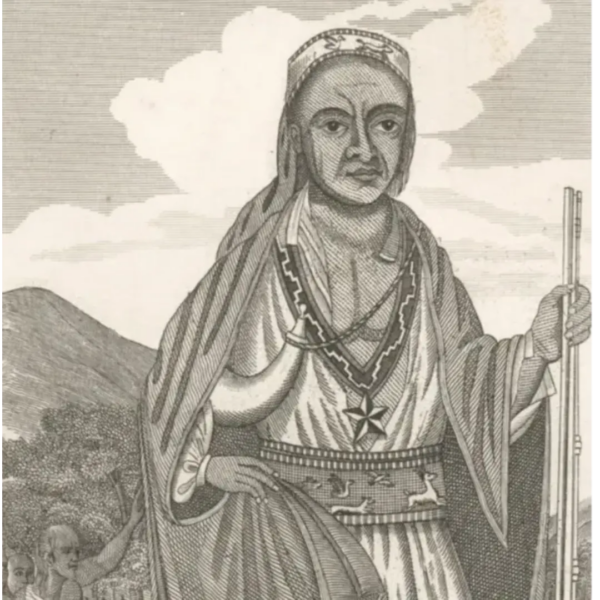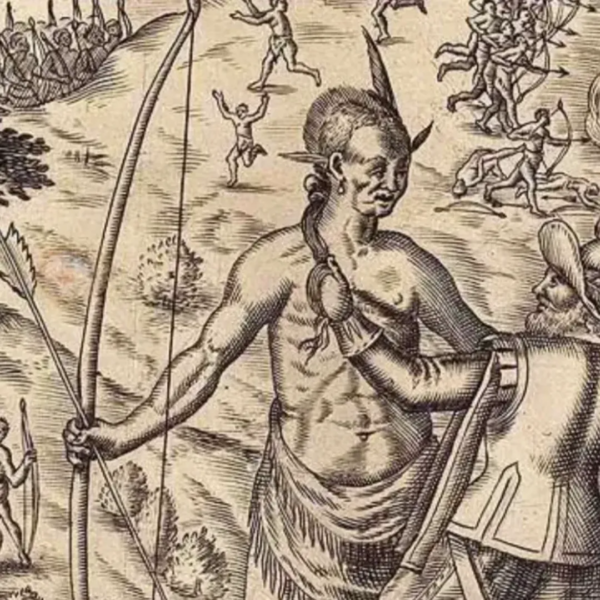Welcome to Unit 2!
Unit’s Essential Questions:
What role did the enslavement of Native people during colonial wars play in colonists’ desire for land and labor?
How did Native American communities experience captivity and enslavement during these wars?
How did these wars affect colonies’ ability to claim land and grow their economies?
-
One of the main goals for Unit 2 is to show how Native slavery was central to English strategies for colonization. Although U.S. history surveys generally mention colonial wars with Native Americans, what’s usually omitted is how English colonists almost always took Native captives and either enslaved them locally or sold them out of the colonies into slavery. Equally important, colonial wars were often used to take more land. Removing Native Americans from their land through captivity and enslavement aided this process of land grabbing.
Read MoreThis unit covers two important examples of these processes in the seventeenth century: The War for New England (what is normally called King Philip’s War) and Bacon’s Indian Warr (usually referred to as Bacon’s Rebellion, in Virginia.) As with other units and lesson plans in this curriculum, we hope this information aligns with materials you might already be teaching but includes the often overlooked perspective of Indigenous enslavement.
In addition to the lesson plans and sources in this unit, we encourage you to consider using other features of the website, such as having students look up records in the database from the 1670s and 1680s, or looking at the geography of enslavement using the map.
We hope these lesson plans help you teach a side of this time period and these wars that may be fresh and new for you and your students.
Direct Links
-
Unit Two Overview
Lesson 1: Lecture – A War for New England: King Philip’s War (1675–1676)
What were the causes of King Philip’s War? What role did the enslavement of Native Americans play in this war? What were the effects of the war and enslaving Natives for English colonists and Native nations?
Lesson 2: Primary Source Analysis – Records of Native Enslavement in the 1670s
What can primary sources tell us about Indigenous slavery during wars in New England, primarily the War for New England/King Philip’s War? How do students’ perspectives change when confronted with historical documents? What biases are shown in these documents and what are their harms? How do historians account for biases when reading these documents?
Lesson 3: Reflection Activity – King Philip’s War Interviews
What were the roles of individuals in King Philip’s War? Why is it important to center individual stories in history? How would history differ if we had access to multiple historical perspectives on how they understood the war, Native enslavement, and territorial expansion?
Lesson 4: Lecture – Bacon’s Indian Warr (1675–1676)
What were the causes of Bacon’s Indian Warr? What role did the enslavement of Native Americans play in this war? What were the effects of the war and enslaving Natives for English colonists and Native nations? What is the relationship between Bacon’s Indian Warr and the War for New England?
Lesson 5: Formative Assessment – Essay on the Connections Between the Two Wars
What are the similarities and differences between the War for New England and Bacon’s Indian Warr? What do they illuminate about the following decades of American history?
-
Unit 2 – Download
-
Education Standards
Common Core
Lesson 1: CCSS.ELA-Literacy.RH.9-10.10, CCSS.ELA-Literacy.RH.11-12.3
Lesson 2: CCSS.ELA-Literacy.RH.9-10.2, CCSS.ELA-Literacy.RH.11-12.2
Lesson 3: CCSS.ELA-Literacy.RH.11-12.3
Lesson 4: CCSS.ELA-Literacy.RH.9-10.10, CCSS.ELA-Literacy.RH.9-10.3, CCSS.ELA-Literacy.RH.11-12.6
Lesson 5: CCSS.ELA-Literacy.RH.9-10.9, CCSS.ELA-Literacy.RH.11-12.9, CCSS.ELA-Literacy.W.11-12.1.
Rhode Island
SSHS.USI.1.2: The impact of European colonization on Indigenous life. Argue the ways that European colonization impacted the lifeways and populations of Indigenous peoples.
HP 2: History is a chronicle of human activities, diverse people, and the societies they form.
1.9-12: Students chronicle events and conditions by critiquing historical narratives for historical accuracy or points of view
APUSH:
Unit 2 – Colonial Society, 1607–1754
2.5: Interactions between Native Americans and Europeans
Unit 2 Lessons
Lesson 1: Lecture – A War for New England: King Philip's War (1675–1676)

Lesson 1: Lecture – A War for New England: King Philip's War (1675–1676)
Lesson 2: Primary Source Analysis – Records of Native Enslavement in the 1670s

Lesson 2: Primary Source Analysis – Records of Native Enslavement in the 1670s
Lesson 3: Reflection Activity – King Philip’s War Interviews

Lesson 3: Reflection Activity – King Philip’s War Interviews
Lesson 4: Lecture – Bacon’s Indian Warr (1675–1676)

Lesson 4: Lecture – Bacon’s Indian Warr (1675–1676)
Lesson 5: Formative Assessment – Essay on the Connections Between the Two Wars

